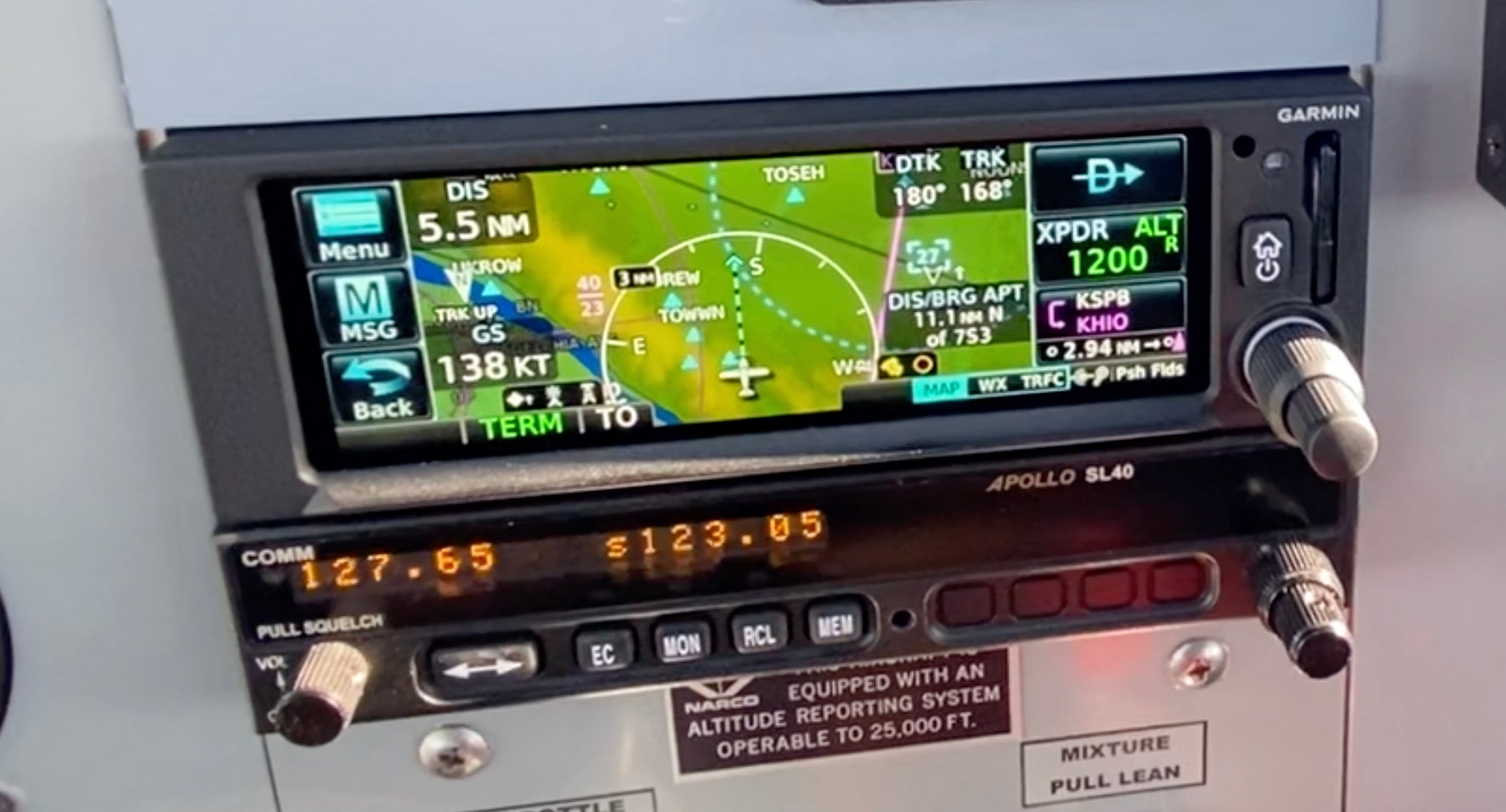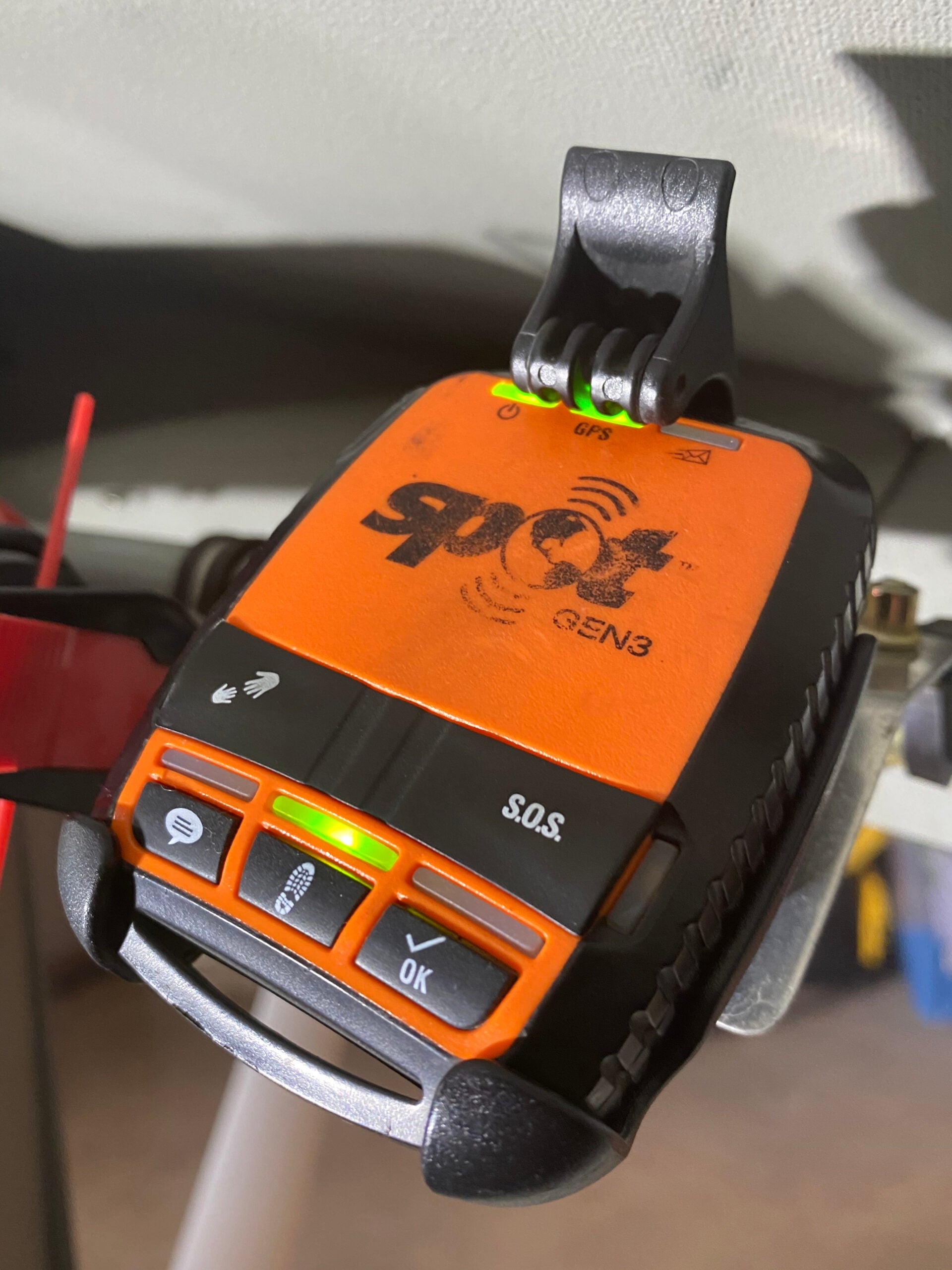A funny thing happened on the way to the coast. I’ve been flying with the Garmin GNX 375 GPS/transponder for a few months now. It was recently certified as part of my pitot-static check performed by Pacific Coast Avionics and has been working great in the weeks since. So far the integration of the transponder and GPS has been a net positive, though there is the risk that if the unit dies you lose both your primary GPS and your transponder.

Once I moved the GPS antenna to a location where it had a good view of the sky—I had inadvertently placed it near some interior panels in the GlaStar that I didn’t realize were backed by aluminum sheet, the avionics equivalent of wearing a tinfoil hat—the 375 has been a good navigator. Except on this trip, when I saw the “GPS Position” warning about 10 minutes into the flight, which came with an ADS-B warning since the transponder couldn’t send location data. In a moment, it passed and I didn’t think much more about it. Five minutes later, same thing. Lost position, ADS-B warning, short pause, then navigation resumes. Hmm.
It was a VFR day and I could easily refer to one of the other position sources in the airplane—or even, you know, look outside. (Incidentally, beyond the 375 but not considering my iPhone or iPad, there are four other GPS receivers in the airplane—one in each G5, one in the GDL 50 and another in the aera 760 I’m testing. Crazy, huh?) But the 375’s failure pattern got me wondering. Every five minutes, and poof—no GPS. That’s not atmospheric, and it’s not due to a heading that could somehow be blanking the antenna from seeing satellites. When it was working, the GNX 375 had excellent satellite reception with very good Estimated Position Uncertainty (EPU) and Dilution of Precision (DOP) numbers.

Since you’ve already seen the photo of the SPOT tracker in this story, you probably can guess the outcome. I didn’t, at first, wondering if I’d bumped the GPS antenna cable behind the panel or had the TNC connector come loose at the antenna. After landing, I took a quick look and all seemed well. I didn’t even think much about the SPOT as I powered it down, turning off the tracking feature I was running for the flight. But sometime over the next day, the tiny nixie tube of recognition flickered on for me. Could the SPOT device, in tracking mode, be interfering with the GPS? I had to think about the sequence of events but soon realized that I’d never flown with the tracker and the GPS antenna in their current positions. You see, I’d moved the GPS antenna back into the GlaStar’s composite shell, inside the cabin but just under the fiberglass wing-root fairing. The SPOT was in a similar position on the other side of the fuselage, less than 3 feet away.
I’d run the SPOT device before and never had a problem. In fact, I used to have the second-gen device in the front of the airplane, really close to the antenna. Still no problem. I found a few references online where others have had issues with the SPOT Gen 3 and SPOT Trace tracker knocking down GPS signals. Thinking more about it, I can see how the SPOT could interfere. It uses the Globalstar satellite constellation, which operates on frequencies close to the NAVSTAR-based GPS used by the Garmin—it transmits position information based on the tracking rate desired and does so on a frequency right between GPS’s L1 and L5 bands. Another hmm. Globalstar even admits as much, saying, “When the SPOT product transmits, there is the possibility of interference even though both the SPOT device and the aircraft navigation/communication systems meet all FCC regulatory requirements for interference.” Funny how I’d never come across that reference until this happened.
Anyway…there you go, the answer. To be honest, this was not something I’d heard widely discussed and so didn’t really consider interference a potential problem. After all, these are very low-watt devices. How bad could it be? Of course, proof came on the return trip. No SPOT tracking, no cutouts on the GNX 375. Now I just need to find a way to rejigger the GPS antenna and the SPOT device to keep ‘em separated. Just what I need: another project.













